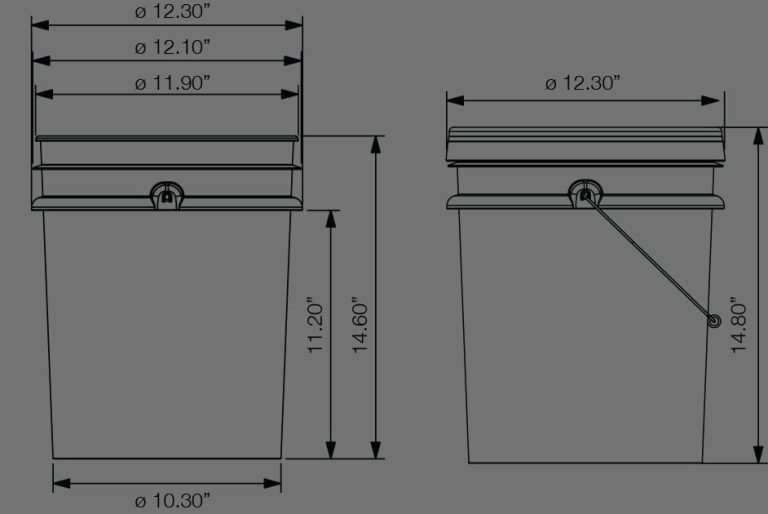When Was Project Paperclip Declassified?
Project Paperclip was a secret program by the United States to recruit scientists and engineers from Nazi Germany after World War II. The program was conducted by the Joint Intelligence Objectives Agency (JIOA) and launched in 1946. The goal of Project Paperclip was to utilize the expertise of these German scientists to give the US an advantage in the Cold War against the Soviet Union, particularly in areas like rocketry, aerospace medicine, and chemical weapons.
Over 1,600 German scientists and their families were secretly brought to the US under Project Paperclip. Some of the more famous recruits included Wernher von Braun, Arthur Rudolph, and Hubertus Strughold, who were key figures in NASA’s space program in the 1950s and 60s. However, many of these scientists had been involved with unethical human experimentation and exploited slave labor under the Nazis, making their recruitment highly controversial.
Project Paperclip has been criticized for whitewashing the past crimes and moral lapses of the German scientists it recruited. There were efforts by the Joint Intelligence Objectives Agency to conceal the Nazi affiliations and activities of these scientists when bringing them to America. The morality and legacy of Project Paperclip continues to be debated today.
Origin of Project Paperclip
Project Paperclip was a top secret program by the United States to recruit German scientists and engineers after World War II, many of whom had been involved with Nazi party organizations and wartime projects. The program began in 1945 as an effort by the United States Office of Strategic Services (OSS) to harness German scientific expertise for Cold War efforts against the Soviet Union. With the defeat of Germany and subsequent Allied occupation, American intelligence sought to gain the expertise of scientists that had worked under the Third Reich.
As described by Wikipedia (Operation Paperclip), “The JCS [Joint Chiefs of Staff] established the Joint Intelligence Objectives Agency (JIOA) in September 1945, and President Truman approved Operation Paperclip in August 1946, formally authorizing the recruitment of foreign scientists for work in the U.S. The JIOA worked independently to circumvent President Truman’s anti-Nazi order, and the JIOA augmented its ranks by hiring patriotic U.S. businessmen to travel to Germany on “operations” to find qualified scientists and engineers.”
Key early figures who led the recruiting efforts included Colonel Donald Putt and Lieutenant Colonel William Henry Whalen, who targeted aerospace engineers and scientists in order to bolster American rocketry programs. Some of the more notable German scientists brought to America under Paperclip included rocket engineer Wernher von Braun and research physician Hubertus Strughold.
Key Scientists Recruited
Three of the most notable scientists recruited through Project Paperclip were Wernher von Braun, Hubertus Strughold, and Kurt Debus.
Wernher von Braun was one of the leading rocket scientists and weapons developers for Nazi Germany. He helped develop the V-2 rocket that was used to attack Allied cities during World War II [1]. After being brought to the United States under Project Paperclip in 1945, von Braun would go on to become director of NASA’s Marshall Space Flight Center and the chief architect of the Saturn V super heavy-lift launch vehicle that propelled the Apollo spacecraft to the Moon [2].
Hubertus Strughold was a physician and scientist who conducted medical experiments on concentration camp prisoners for the Luftwaffe during WWII. Despite this unethical past, he was brought to the US in 1947 under Project Paperclip and went on to become known as the “Father of Space Medicine” for his work on the effects of space flights on human beings. He helped establish the Space Medicine Branch at Randolph Air Force Base [3].
Kurt Debus directed the V-2 rocket program’s test launches at the Peenemünde Army Research Center in Germany during WWII. He later worked with von Braun’s rocket team at Fort Bliss before becoming the NASA Kennedy Space Center’s first director in 1962. Debus was essential in preparing launch facilities for the Apollo–Saturn missions [1].
Operations and Activities
The Project Paperclip operations and research activities were spread across several locations and facilities in the United States:
- Operation Paperclip – Wikipedia – Paperclip scientists worked at Fort Bliss, Texas; White Sands Proving Ground, New Mexico and Huntsville, Alabama. The second phase of Project Paperclip included the relocation of aerospace research to Redstone Arsenal in Alabama.
- Review of “Operation Paperclip” – The Naval Air Station at Point Mugu housed multiple Paperclip personnel working on aerospace technology, rocketry and missile programs.
The main types of research conducted by Paperclip scientists involved aerospace engineering, rocketry, missiles, chemical weapons and biological warfare. Some key technology developments included:
- The Wasserfall anti-aircraft missile, researched by Wernher von Braun and colleagues at White Sands.
- The A-4 and A-9 rocket programs at Redstone Arsenal, building on German V-2 technology.
- Advancements in jet propulsion including turbojets, ramjets and rocket planes.
- Wind tunnels, electronics, guidance systems, and aerospace medicine.
Links to Unethical Experiments
One of the most disturbing aspects of Project Paperclip was its link to unethical human experimentation conducted by the Nazis during World War II. Many of the scientists brought to America under the program had conducted experiments on concentration camp prisoners without consent (1). For example, Hubertus Strughold, who played a key role in developing NASA’s space program, was linked to horrific medical experiments on inmates at the Dachau concentration camp (1). Other scientists were involved in tests involving hypothermia, altitude sickness, and poisonous gas.
The use of data from unethical Nazi experiments raised major moral implications. Some argued the data should never be used, while others claimed it would be equally unethical not to use it. In the end, much of the Nazi research was incorporated into U.S. scientific and military programs. For instance, research on hypothermia from immersion experiments was used to develop safety measures for pilots who had to eject over cold ocean water (2). The complexity of the moral debate was summed up by Robert Jay Lifton, who stated “U.S. military agencies were forced to look at Nazi science on its merits … Whether they wanted to or not, they had no choice but to be amoral” (3).
While the scientific contributions of Paperclip scientists proved valuable, their links to unethical experimentation cast a dark shadow. It illustrated the moral compromises countries were willing to make in pursuit of military supremacy. The lasting legacy was measured not just in technological gains, but in ethical lines crossed.
Sources:
(1) https://en.wikipedia.org/wiki/Operation_Paperclip
(2) https://www.history.com/news/what-was-operation-paperclip
(3) https://www.pbs.org/newshour/show/remembering-operation-paperclip-when-national-security-trumped-ethical-concern
Declassification of Records
The existence of Project Paperclip was initially undisclosed and classified. The U.S. government provided fabricated biographies and concealed incriminating evidence of Nazi connections for the scientists brought to America under the project. However, the program began to be revealed publicly through FOIA requests and investigations in the 1970s and 1980s.
In 1974, the Chief Counsel of the U.S. Army responded to an inquiry concerning Project Paperclip from Senator John Tunney. The response stated that between 1945-1955, around 500 German scientists had entered the U.S. under Project Paperclip. Names and biographical information were not disclosed at the time.
Journalist Linda Hunt filed Freedom of Information Act requests in the 1980s concerning Project Paperclip while investigating Nazis brought to America after the war. In 1985, she published Secret Agenda: The United States Government, Nazi Scientists, and Project Paperclip, 1945 to 1990, which revealed details of the program and the government’s efforts to conceal it.
In 1999, the U.S. government began a comprehensive declassification review of documents related to Project Paperclip. However, as of 2022, some individual documents relating to the project still remain classified and unavailable publicly.
Cite: https://en.wikipedia.org/wiki/Operation_Paperclip
Public Reactions
The declassification of Project Paperclip records in the 1980s sparked intense public debate and ethical concerns. Many were outraged to learn that former Nazi scientists and engineers had been secretly recruited to work for the United States government and military through the program.1 The recruitment of individuals linked to unethical human experimentation and the Nazi regime raised serious moral questions.
Critics condemned Paperclip as an unethical Faustian bargain, sacrificing moral principles in exchange for scientific expertise.2 However, defenders argued the program was a necessary measure during the Cold War competition against the Soviet Union. This intense ethical debate impacted government policies, with stricter screening procedures implemented for scientist recruitment.
The revelations also led to Congressional inquiries and investigations into Paperclip activities and their legacy. While the short-term military interests were clear, the morality and wisdom of recruiting Nazi scientists remained hotly contested. The program’s complex historical legacy continues to spark discussion today.
Lasting Influence
Operation Paperclip had a major influence on the advancement of aerospace technology and rocketry in the United States. Many of the scientists recruited through the program, such as Wernher von Braun, were instrumental in developing missiles and rockets for the U.S. military as well as NASA’s space program. Von Braun became the first director of NASA’s Marshall Space Flight Center and the chief architect of the Saturn V launch vehicle that enabled the Apollo program to land astronauts on the moon (1).
Other Paperclip scientists like Kurt H. Debus and Arthur Rudolph played key roles in NASA’s early spaceflights and developing rocket technology. In all, over 120 Paperclip recruits worked for NASA contributing invaluable expertise in aeronautics and propulsion (2). Critics argue this came at an ethical cost of overlooking Nazi pasts, but it undeniably gave the U.S. an edge in the space race. The scientific knowledge gained through Paperclip remained at the core of American rocketry and aerospace for decades.
Some of the more controversial recruits, like Wernher von Braun, have complex legacies. Von Braun achieved great engineering feats at NASA but also relied on concentration camp labor for V-2 rocket production during WWII. He and other recruits were shielded from prosecution. However, declassified documents show von Braun later expressed regret over the exploitation of prisoners (3).
Sources:
(1) https://www.britannica.com/topic/Project-Paperclip
(2) https://airandspace.si.edu/stories/editorial/project-paperclip-and-american-rocketry-after-world-war-ii
(3) https://www.history.com/news/what-was-operation-paperclip
Later Investigations
Several investigations were conducted many years after Operation Paperclip ended to uncover more details about the secret program. In 1989, an inquiry by the Justice Department found that at least 300 Paperclip scientists had worked directly for Nazi organizations and played key roles in Nazi atrocities. However, many details remained classified by the CIA and other government agencies.
In 1999, the U.S. House of Representatives’ ethics committee launched an investigation into how Paperclip scientists were allowed into the country despite their Nazi affiliations. They discovered the U.S. government deliberately obscured and whitewashed the Nazi backgrounds of the scientists they recruited. For example, official paperwork often used code names and aliases for Paperclip recruits who had engaged in war crimes for the Nazis.
In the early 2000s, several hundred thousand pages of declassified documents revealed new information about Operation Paperclip. The documents showed that U.S. occupation authorities knowingly overlooked the Nazi pasts of the scientists and helped them enter and acquire U.S. citizenship under false pretenses. They also revealed coordination between Paperclip and U.S. intelligence to shield Nazi scientists from war crimes prosecutors.
While much has been uncovered, some experts believe more government archives need to be opened to fully reveal the unethical extent of the Paperclip program. There are continued calls for further transparency and investigation into how so many Nazi scientists evaded justice and gained positions in the American scientific community.
Conclusion
In summary, Operation Paperclip was a secret program by the United States to recruit German scientists, engineers, and technicians following World War II. Key figures such as Wernher von Braun, Kurt H. Debus, and Arthur Rudolph were brought to America to advance rocketry and space exploration, with little regard for their links to unethical Nazi experiments. While the program gave the US an edge in the Cold War space race, it remained classified until the 1970s and 80s, when documents were finally declassified amid public outrage. The revelations highlighted the moral cost of acquiring scientific knowledge by any means. While Paperclip resulted in major achievements like the Apollo moon landings, critical ethical questions remain unresolved regarding America’s recruitment of former Nazi personnel.





